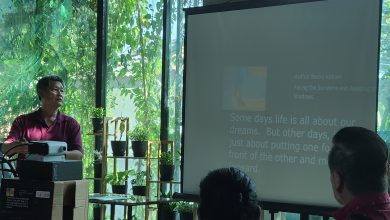Eye Health
In our continuing series on Eye Health, Consultant Eye Surgeon Dr S.S. GILL talks to us about lighting.


DOES READING IN DIM LIGHT DO ANY HARM?
Reading in dim light does not change the function of our eyes in any permanent way but it does stress the eyes out! There is no reason to unnecessarily read or work in poorly lit conditions. Take note that the best lighting conditions for reading are ambient or somewhat diffuse lighting, rather than direct lighting. There should be no glare in a reading area to avoid eye strain. It is a good idea to take the pains to set up a reasonable well lit reading space to make reading more enjoyable.
DOES THE TYPE OF LIGHTING MAKE A DIFFERENCE?
Warm white light gives off yellowish light that helps enrich the warm colours around us. They have a calming effect and help to relax an individual. You will find areas like bedrooms, lounges and hallways are better off with warm white light.
The cooler white light that emits more blue light on the other hand is “sharper” and improves our ability to see contrasts better making it good in work areas such as kitchens, laundries, workshops and offices. But prolonged and excessive blue light exposure is unhealthy for the eyes.
Cool white light, (light with an output in the predominantly blue spectrum of light) does also exacerbate glare. This is because light in the blue part of the spectrum and UV light (approx 3500K) makes the eye (photoreceptors) work at a much higher rate than that of the warm white (2700K) fluorescent tube.
In a natural sense, most people do tend to prefer ‘warm white’ light. In fact, we have been conditioned to find warm appearing lamps ‘normal’ at low lighting levels, since it is much like the colour of fire which we have used as a light source for thousands of years before the light bulb was invented.
BLUE LIGHT EXPOSURE:
Based on scientific research, it is now known that excessive blue light damages the retina (back of the eye) contributing to diseases like age related macular degeneration. Take note, that if you don’t feel good in a space because of its lighting, you won’t work as productively so do choose the appropriate lighting!


